

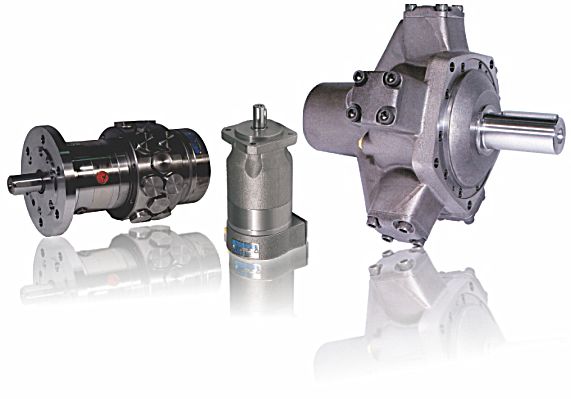


» shaft end can be subjected to high radial and axial forces.
» only very few moving parts in the rotating group.
» extremely low moment of inertia.
» instrument shaft may be fitted.
» low leakage-built in wear compensation.
» suitable for use with fire resistant fluids.
» low maintenance.
» small ports are B.S.P. type G threads according to ISO 22811.
» full torque available over complete speed range.
» immediately reversible.
» no counter-pressure necessary when operated as a motor.
» suitable for use as pumps with boosted system.
» eminently suitable for control systems.
» control of feed and discharge possible.
» may be operated in parallel.
» SAE Flange connection.
These hydraulic piston motors have a high starting torque, ideal for instance, for safe operation of the heavy gates on the material lock in a nuclear power plant or to hand over the weighty coils in a rolling mill.
Due to the low amount of revolving mass, the rotational direction can be quickly changed a feature very important in many test benches; when performing vibration tests on motorcycle forks or when testing the adjustment of wing flaps on aircraft. The components can perform up to 50 rotational direction changes per second.
An exact adherence to the specified rotational speed profile is of essential importance for many fields of application of hydraulic motors. Here is a new generation of motors, for which a significantly improved constancy of rotational speed is achieved compared to conventional motors.
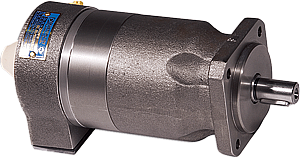


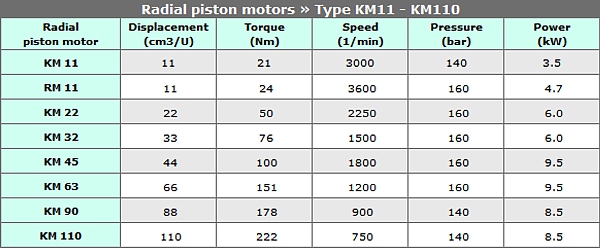
» Available in a new High Precision version. Use as standard for stable speeds significantly less than 1rpm.
» Also available with servo regulation to give the ultimate in low speed performance.
» Precision drives ideally suited to test rig applications where accurate speed regulation is critical.
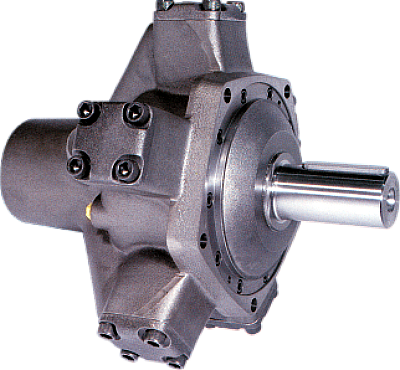
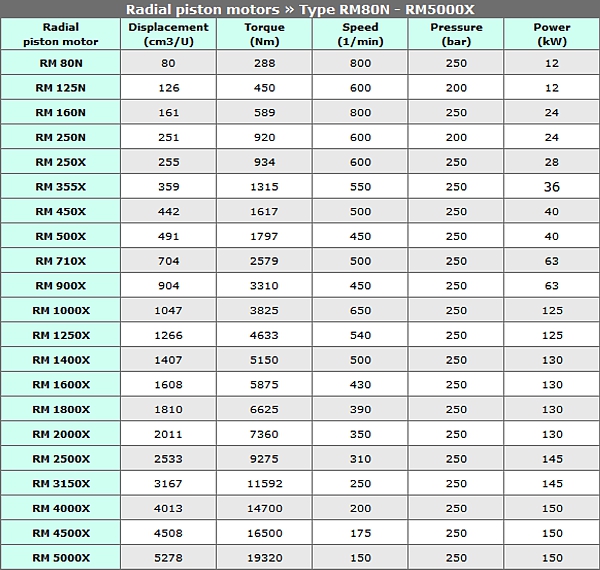
» Choice of shafts.
» Double shaft extension.
» Motor and brake combinations.
» Geared motors; gear motor and brake combinations.
» Tachometer and other measuring attachments.
» Couplings, flanges.
» Viton seals.
» Direct valve assembly possible.
» Connection SAE J 518 high pressure (type: A1).
» Special models for HFB and HFC non-flammable fluids.
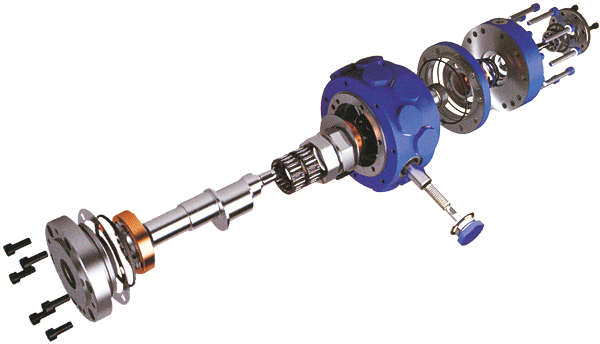
Design modifications in the flow control inside the motor as well as in the arrangement of the pistons have led to significant improvement of the constancy of the rotational speed. In addition, the speed range was clearly extended downwards. For the standard motor which is already precise in competitive comparison, the ability to run is ensured for a minimum speed of 5 min-1.
The high precision motor can achieve speeds of significantly less than 1 min-1 with already good constancy of speed in unregulated operation. The maximum speed is still up to 2000 min-1, depending on the motor size.
The radial piston hydraulic motor has been designed with a high load capacity. It is efficient, has a low moment of inertia and is capable of very low speeds and has excellent reversing properties.
The concept features make it extremely quiet, being suitable for servo control systems with facility to work either as a motor or pump in both directions.
Drive Motor: consists of a close grain, high strength, cast iron cylinder block. Eccentric crankshaft concept.
Operating characteristics: five radial piston/connecting rod assemblies bear on the crankshaft which is located by heavy duty tapered roller bearings.
Crankshaft bearings: preloaded to take the thrust in both axial directions, ensuring silent running and allows heavy radial and axial loading on the output shaft (e.g. gear drives).
Connecting rod: the computer optimized design is hydro-statically balanced on the crankshaft with sufficient leakage to ensure lubrication and cooling. Friction losses are reduced to a minimum and stick slip action is avoided at low speeds. High starting torque and running torque combined with high speeds are important features of the design. Long service life is assured since con-rod slippers are uneffected by contamination and self-adjustable. Non-flammable fluids have been used with success. Noise generation is also reduced by the cushioning effect of the hydro-static bearing design.
